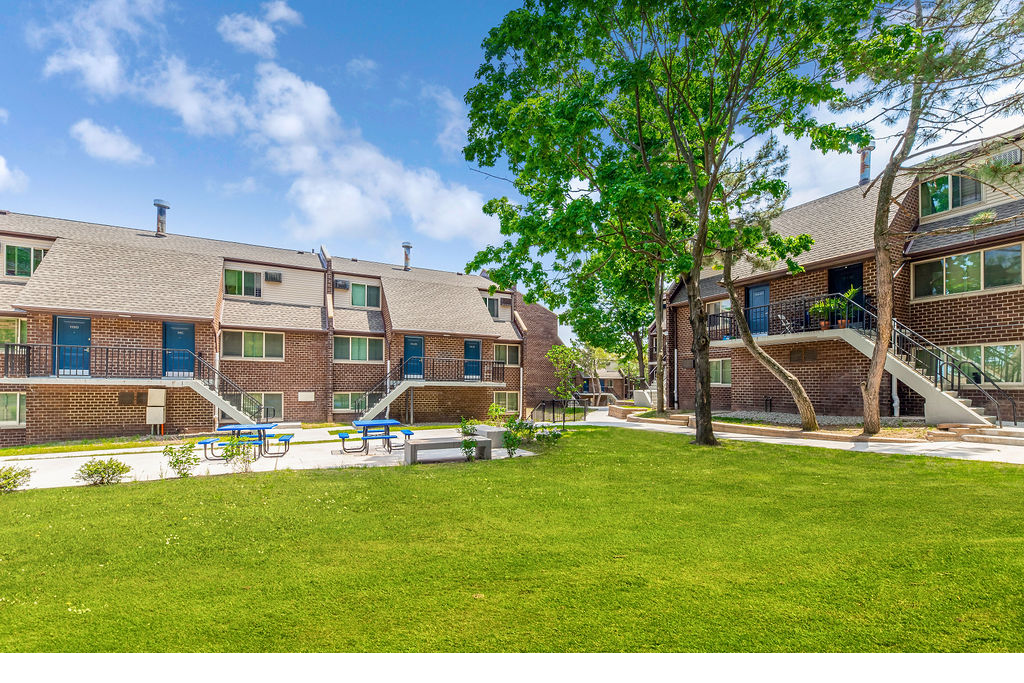
Access to safe drinking water is a fundamental human right, but in many low-income communities across the United States, this right remains compromised. Despite decades of progress, factors like aging infrastructure, lack of financial investment, and systemic inequities create disproportionate levels of poor water quality in vulnerable communities. According to the CDC, the overall disease burden of waterborne illnesses costs the U.S. healthcare system over $3 billion annually.
Income level is a well-established social determinant of health. For many low-income households, the challenges are compounded: they often lack access to healthcare, health insurance, paid sick leave, and can’t easily afford alternatives like bottled water or filtration systems. For these communities, the health impacts of waterborne disease are more severe, and recovery options are limited, creating a cycle that healthy infrastructure aims to break.
In response to these growing challenges, Clear Inc., a fast-growing innovator in UV water purification technology, has partnered with a national leader in affordable and mixed-income housing development to bring improved water quality to communities in need.
As a part of a broader health-first approach to affordable housing, this project aimed to employ Clear’s centralized UV water purification systems as an added layer of water treatment at the building level.
This project involved two garden-style villages in New Jersey, each consisting of 46 low-rise buildings, totalling 305 units.
.jpg)
Clear’s team conducted a full on-site assessment and designed a property-specific plan that matched the unique requirements of this garden-style design. Given that there are 92 buildings across the two villages, each with a point-of-entry for city water, this plan included a separate UV water treatment system for each building, totalling 92 system installations across both villages.
.jpg)
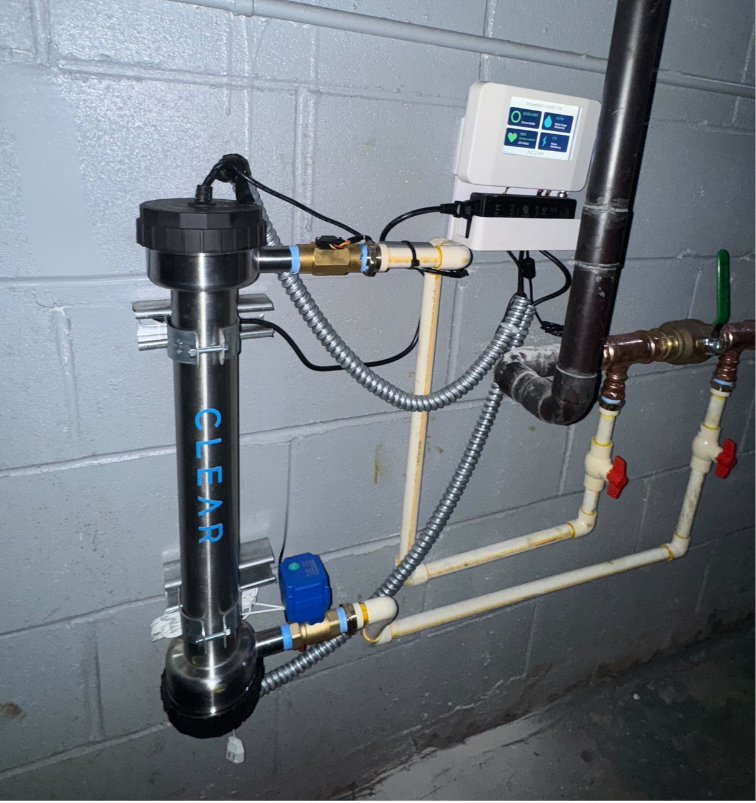
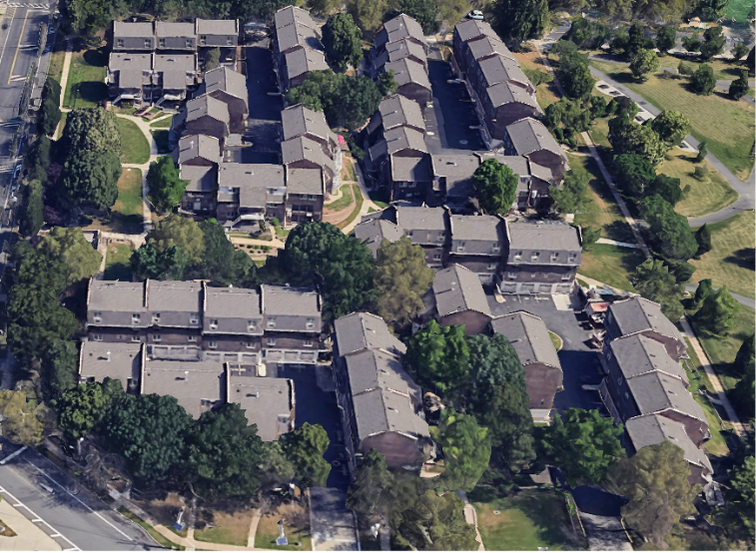
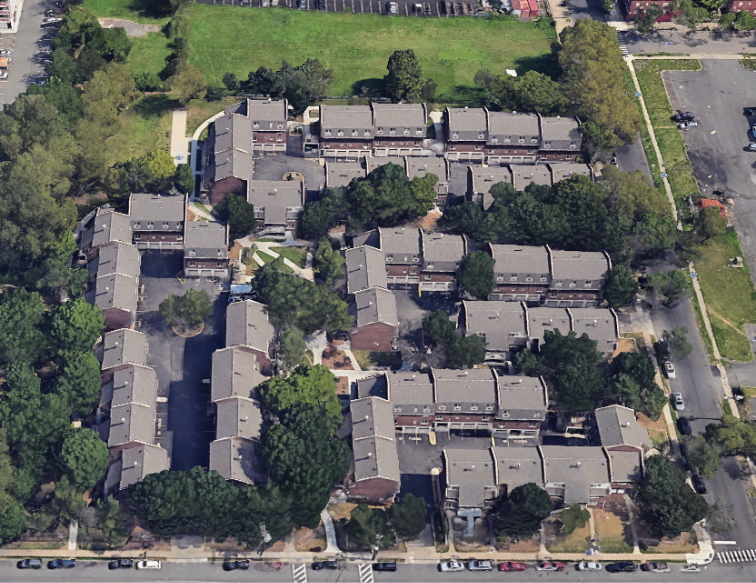
For this project, a UV-LED disinfection system was selected to accommodate the moderate flow rates typically seen in low-rise multifamily buildings. Clear’s plans included:

To validate the effectiveness of the UV systems, Clear performed bacteriological water quality testing on three randomly selected buildings (Table 1).
Using a customized lab protocol, test results showed that incoming municipal water contained over 2,200 CFU/mL of culturable bacteria. After UV treatment, bacterial levels dropped to 0.01–0.38 CFU/mL. This represents a 5–6 log reduction in microbial load. Because this testing method detects only culturable bacteria, it’s likely that additional non-culturable organisms, many of which are pathogenic, were also significantly reduced.
Notably, testing also revealed a measurable decrease in both free and total chlorine levels post-treatment, contributing to better water taste, and lower risk of corrosion in internal plumbing.
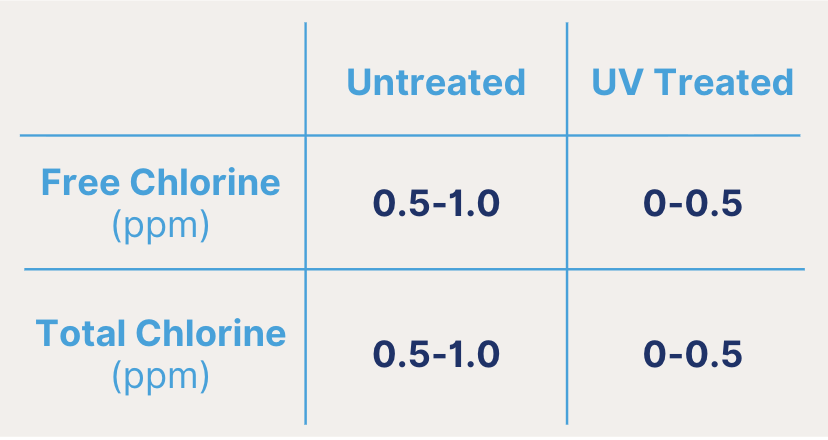
To ensure long-term reliability and performance, each UV system is backed by Clear’s comprehensive service plan. Designed to eliminate maintenance burdens for property management, Clear offers a full suite of ongoing support. The provided services include:
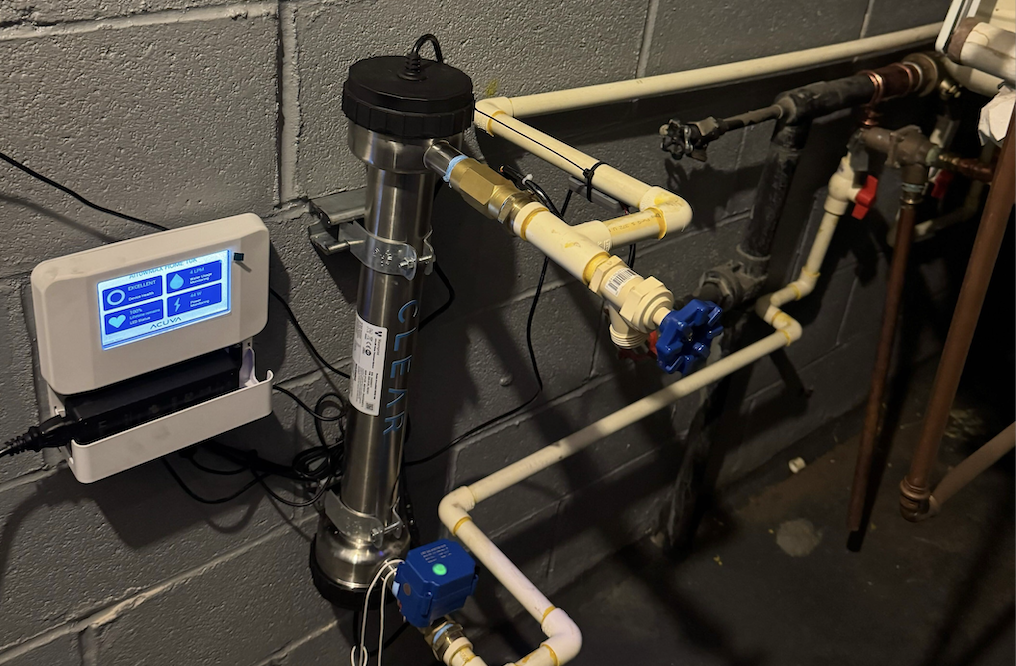
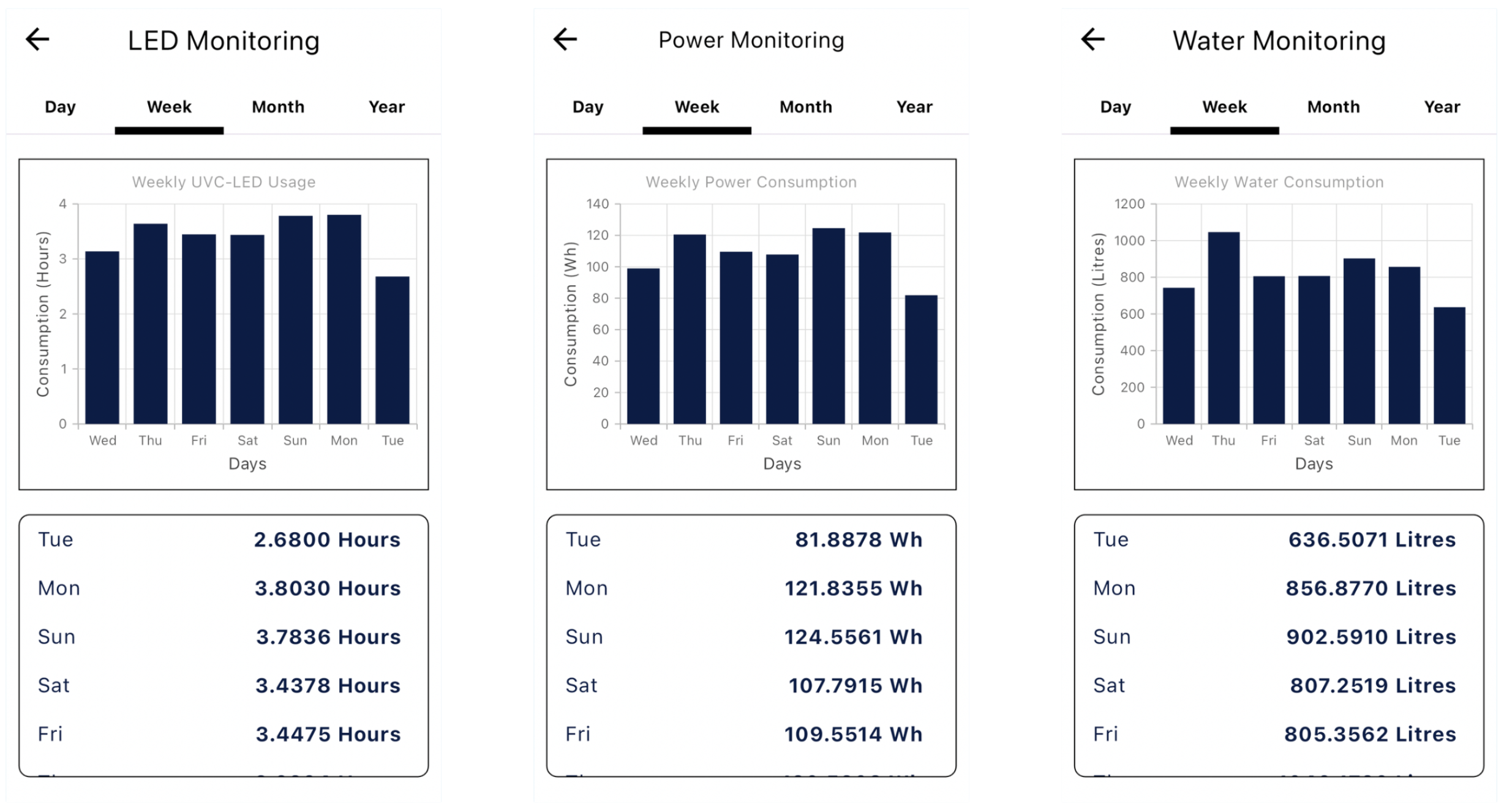
The installation of Clear’s UV purification systems in these properties represents more than just an infrastructure upgrade - it’s an investment in the health and dignity of residents. In low-income communities, this is particularly important, as residents often face:
For residents, the new Clear water initiative creates a significant difference. Instead of receiving water with over 2,200 CFU/mL of bacteria, they now have access to water that carries 100,000 to 1,000,000 times less bacteria. This translates to fewer sick days, greater peace of mind, and a tangible improvement in daily life.
This project also reinforces the importance of industry collaboration to integrate public health initiatives into affordable housing. This project partnership with Clear exemplifies how affordable housing developers can take proactive steps toward equity, safety, and quality of life.
.jpg)
With this project, 305 low-income families now have access to safe, reliable water, setting a new precedent for healthy infrastructure in affordable housing. In a time when waterborne illnesses like Legionella continue to rise, the importance of initiatives like this only grows.
.jpg)
This project demonstrates the scalability of Clear’s UV purification systems for other affordable housing settings. It also reflects the mission of the US Department of Housing and Urban Development (HUD), by promoting equitable access to health-supportive housing, improving infrastructure in underserved communities, and applying forward-thinking development that prioritizes resident well-being.
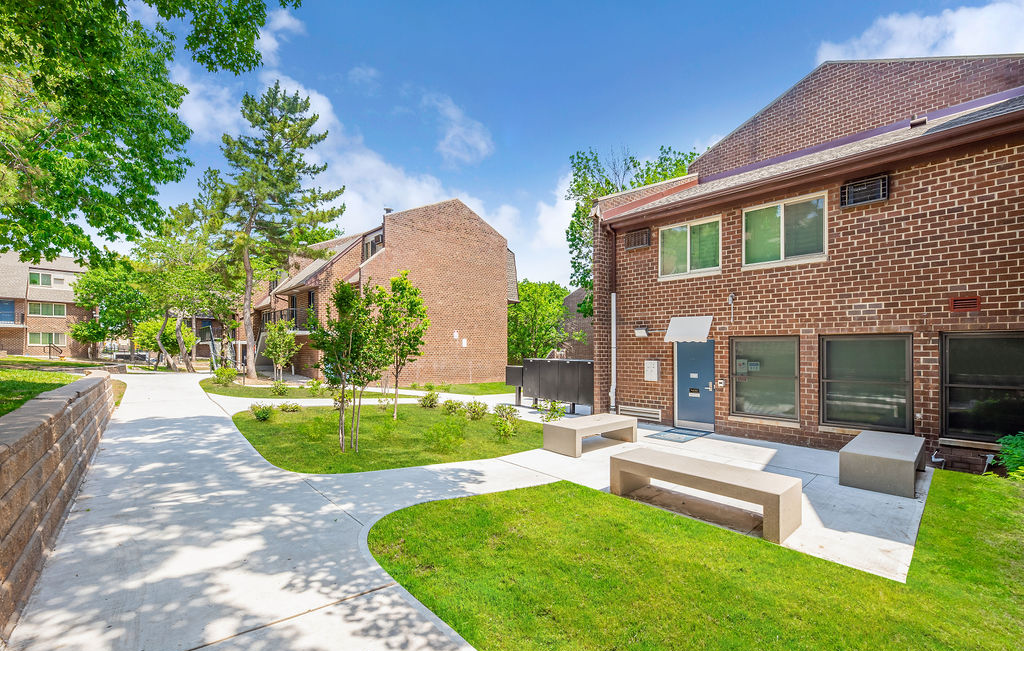
Following the success of this project, Clear and their partners are actively working to expand this initiative to more properties, ensuring that safe water is not a privilege, but a guaranteed right for every resident.
